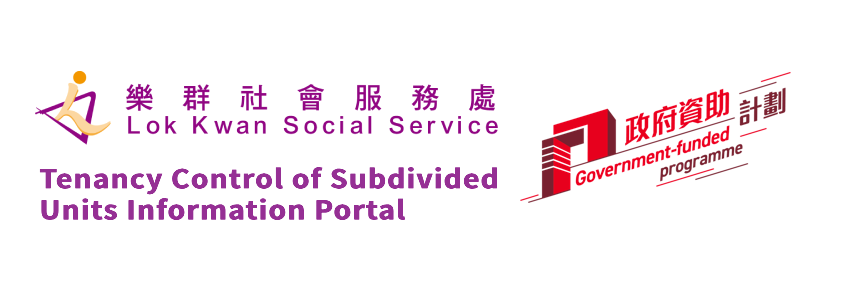Top
Email
Facebook
Whatsapp
Wei Bo
We Chat
"Scan QR Code" in WeChat and tap "..." to share.
Twitter
Twitter
As a Tenant
- Home
- Regulated Tenancies
- As a Tenant

|
A regulated cycle of tenancies for a subdivided unit (“SDU”) is to comprise 2 consecutive “regulated tenancies” (i.e. first term of 2 years and second term of 2 years) for the SDU
|
|
|
A tenant is entitled to be granted a second term tenancy, thus enjoying a total of 4 years of security of tenure
|
|
|
A landlord must make the second term offer of 2 years to the tenant
|
|
|
A landlord cannot terminate the tenancy before the expiry of the term, except under the circumstances as specified in Part IVA of the Landlord and Tenant (Consolidation) Ordinance (Cap. 7) (“Ordinance”)
|
|
|
The terms and conditions of the second term tenancy are to be the same as those of the first term tenancy, except the period of the tenancy and the amount of rent
|
|
The rent of a first term tenancy is to be agreed between the tenant and landlord
|
|
| The rent cannot be increased during the term | |
|
The rate of rent increase for the second term tenancy must not exceed the percentage change of the rental index compiled by Rating and Valuation Department (“RVD”) during the relevant period, and is capped at 10%
|
|
|
If the percentage is a negative figure, the rent for the second term tenancy is to be reduced at least by that percentage
|
| A tenant and a landlord may enter into their own written tenancy agreement for the first term tenancy, provided that the contents of the tenancy agreement do not conflict with the provisions in Part IVA of the Ordinance. (Please refer to the Template for Tenancy Agreement) | |
| If the first term tenancy of a tenancy agreement, which was entered orally, has commenced, and the tenant has demanded in writing the landlord to serve on the tenant a written tenancy agreement reflecting the contents of the oral tenancy, the landlord is obliged to provide a written tenancy agreement to the tenant within 30 days otherwise the tenant may withhold the payment of rent, or terminate the tenancy after a period as specified in Part IVA of the Ordinance | |
|
The stamp duty is to be borne by the landlord solely
|
|
|
After signing and returning the written tenancy agreement by the tenant, if the landlord fails to return a counterpart of the stamped tenancy agreement within 30 days, the tenant may withhold the payment of rent until the landlord has returned the counterpart
|
|
The amount of rental deposit shall not be more than 2 months’ rent
|
|
|
A landlord must return the rental deposit to the tenant within the period as specified in Part IVA of the Ordinance
|
|
A tenant may, by giving the landlord not less than 30 days’ prior notice in writing, terminate the tenancy. However, the date of termination must not be a date earlier than the last day of the first year of the term
|
A landlord must maintain and keep in repair the following facilities serving the premises exclusively:
|
|||||||||
|
A landlord must also keep in proper working order the fixtures and fittings provided in the premises
|
|||||||||
|
If the landlord fails to fulfill any of the above obligations, the tenant may terminate the tenancy
|
If a tenant fails to pay the rent within 15 days after the due date, or is in breach of any of the sub-items below, the landlord may enforce the right of re-entry:
|
|
A landlord commits an offence if the landlord requires the tenant to pay any charges which are not permitted under Part IVA of the Ordinance
|
|||||||
|
If a landlord overcharges the specified utilities and services, the landlord commits an offence
|
|||||||
|
Specified utilities and services mean water, electricity, gas, communication services (including telephone service other than mobile telephone service, the Internet, cable television and satellite television)
|
|||||||
Where any of the specified utilities and services for an SDU are not independently billed by the service providers (e.g. power companies or Water Supplies Department), the landlord must comply with the following conditions when requiring the tenant to reimburse the relevant charges as a separate payment from rent:
|
|||||||
|
The landlord is not allowed to request the tenant for reimbursement of the relevant charges at a sum exceeding the apportioned amount for the SDU as shown in the account
|
|||||||
|
Provided that there is no conflict with the relevant legislation, the landlord and tenant may discuss and agree on an acceptable apportionment method for the charges before entering into a tenancy
|
Note: For further details of the above key points, please refer to the booklet and At- a-glance on “Regulated Tenancies” prepared by RVD. All contents are subject to the provisions of Part IVA of the Ordinance.





